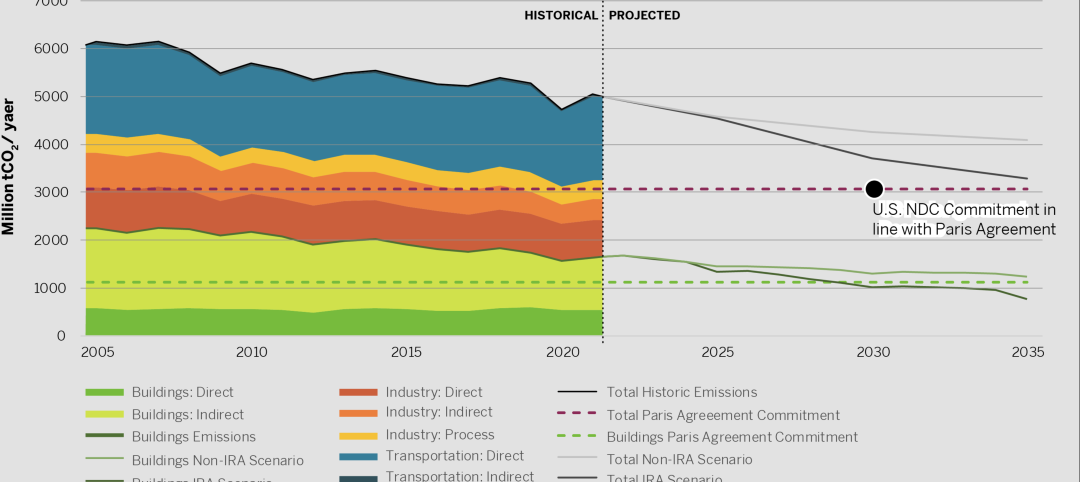In the North American green buildings market, where LEED, BREEAM, WELL, Living Building Challenge, and Green Globes dominate the landscape, the German-born Passivhaus standard (aka, Passive House) has struggled to gain a solid foothold, despite a strong grassroots growth effort among its early adopters.
There are an estimated 60,000 buildings worldwide designed and built to Passivhaus standards, the vast majority in Europe. In the U.S., more than 1.1 million sf of building space is certified or pre-certified to PHIUS+ standards, according to the Passive House Institute US. But the lion’s share is small residential buildings.
A new study conducted by FXFOWLE and funded by the New York State Energy Research and Development Authority set out to determine the viability of Passivhaus for tall residential buildings. The research involved investigating the feasibility of adapting the design of a sustainable mixed-use high-rise building in the 2016 New York City market to Passivhaus requirements. The base case building is a 593,000-sf, 26-story multifamily high-rise building in Queens that is targeting LEED v.3 Silver Certification and 20% energy cost savings from ASHRAE 90.1-2007. The study examined the impacts of achieving the standard from an architectural, enclosure detailing, mechanical, structural, constructability, resiliency, zoning, and code perspective.
FXFOWLE’s findings show promise for the niche standard. The technical difficulties of meeting the stringent energy efficiency and insulation standards can be overcome with minimal aesthetic changes and a glazing ratio of up to 40%, according to the report’s authors, Ilana Judah, Intl. Assoc. AIA, LEED AP, Principal, Director of Sustainability, and Daniel Piselli, AIA, LEED AP, Senior Associate, both with FXFOWLE.
From a financial perspective, the Passivhaus design represents an increased capital cost of 2.4%, a 40-year net present value of $5.2 million, and a payback of 24 years as compared to the base case building.
“The multifamily project type and scale are favorable to meet Passivhaus requirements due to controllable internal heat gains and low enclosure to volume ratios,” the authors wrote. “Some code and regulatory requirements conflict with Passivhaus strategies, and these must be aligned to enable implementation.”
Related Stories
Green | Dec 11, 2023
U.S. has tools to meet commercial building sector decarbonization goals early
The U.S. has the tools to reduce commercial building-related emissions to reach target goals in 2029, earlier than what it committed to when it signed the Paris Agreement, according to a report by the U.S. Green Building Council.
Industry Research | Dec 9, 2023
Two new reports provide guidance for choosing healthier building products
The authors, Perkins&Will and the Healthy Building Network, home in on drywall, flooring, and insulation.The authors, Perkins&Will and the Healthy Building Network, home in on drywall, flooring, and insulation.
University Buildings | Dec 8, 2023
Yale University breaks ground on nation's largest Living Building student housing complex
A groundbreaking on Oct. 11 kicked off a project aiming to construct the largest Living Building Challenge-certified residence on a university campus. The Living Village, a 45,000 sf home for Yale University Divinity School graduate students, “will make an ecological statement about the need to build in harmony with the natural world while training students to become ‘apostles of the environment’,” according to Bruner/Cott, which is leading the design team that includes Höweler + Yoon Architecture and Andropogon Associates.
Industrial Facilities | Nov 14, 2023
Some AEC firms are plugging into EV charging market
Decentralized electrical distribution is broadening recharger installation to several building types.
Sustainability | Nov 1, 2023
Researchers create building air leakage detection system using a camera in real time
Researchers at the U.S. Department of Energy’s Oak Ridge National Laboratory have developed a system that uses a camera to detect air leakage from buildings in real time.
Sustainability | Nov 1, 2023
Tool identifies financial incentives for decarbonizing heavy industry, transportation projects
Rocky Mountain Institute (RMI) has released a tool to identify financial incentives to help developers, industrial companies, and investors find financial incentives for heavy industry and transport projects.
Codes and Standards | Oct 10, 2023
Green Seal will not certify any paints, coatings, floor care products containing PFAS
Green Seal will no longer certify any paints and coatings, floor care products, adhesives, and degreasers containing any per- and polyfluoroalkyl substances (PFAS), commonly called “forever chemicals.”
Metals | Sep 11, 2023
Best practices guide for air leakage testing for metal building systems released
The Metal Building Manufacturers Association (MBMA) released a new guidebook, Metal Building Systems - Best Practices to Comply with Whole-Building Air Leakage Testing Requirements.
Office Buildings | Aug 31, 2023
About 11% of U.S. office buildings could be suitable for green office-to-residential conversions
A National Bureau of Economic Research working paper from researchers at New York University and Columbia Business School indicates that about 11% of U.S. office buildings may be suitable for conversion to green multifamily properties.
Multifamily Housing | Aug 23, 2023
Constructing multifamily housing buildings to Passive House standards can be done at cost parity
All-electric multi-family Passive House projects can be built at the same cost or close to the same cost as conventionally designed buildings, according to a report by the Passive House Network. The report included a survey of 45 multi-family Passive House buildings in New York and Massachusetts in recent years.

















